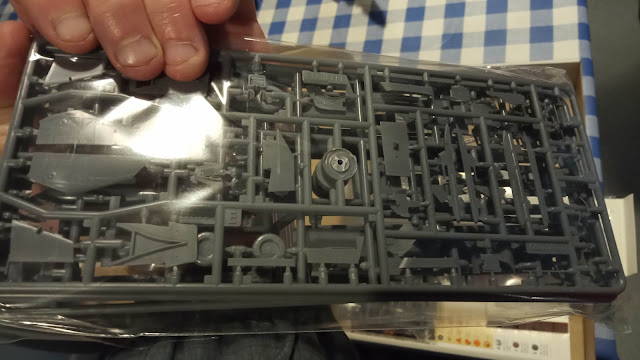
"..10:30 am, November 20, 1953, over the valley of Diên Biên Phu. A fleet of Dakotas dropped the paratroopers of the Bigeard battalion in a 'grandiose' show of force. Named "Castor" (or 'Beaver'), the biggest airborne operation of the entire war in Indochina would not have been launched if the weather had not been favorable that day... The decision to set up an air-land base in the middle of the jungle, 300 kilometers from Hanoi in an area controlled by the Viet Minh, fell to General Navarre, Commander of the French Expeditionary Corps in the Far East. On January 1, 1954, as his intelligence services alerted him to the considerable resources that the enemy was sending from China, he predicted that Diên Biên Phu would be, above all else, a battle for control of the air. From November 20, 1953 to May 7, 1954, French aviators had to gradually push their action beyond the limits of human resistance. Without the crews of the Armée de l'Air, of the Aéronavale, or the Aviation Légère d'Observation d'Artillerie, the requisitioned civilian Air Companies, and also the American pilots, heirs to the Flying Tigers, the entrenched camp would never have seen the light of day and the garrison would not have been able to survive and fight. In addition to the often poor weather conditions, the crews had to face aggressive and deadly enemy flak, comparable to the German Flak over the Ruhr during the Second World War. As the runway was neutralized in the first days of the attack by Viet Minh artillery, the Dakotas and Flying Boxcars were forced to fly dangerous resupply missions at night and in conditions that were more difficult than those endured by German transport crews at Stalingrad, while fighters and bombers assailed the numerous Viet Minh cannon and machine gun batteries..."
Patrick-Charles Renaud in " Aviateurs en Indochine, Diên Biên Phu " (Grancher, 2003)


..variously described as 'significant', 'consequential' or even 'climatic' the fact remains that the 'siege' of Dien Bien Phu that took place in northern Vietnam (Indochine) between 13 March and 7 May 1954 was the most disastrous military 'campaign' ever undertaken by a so-called professional army in the modern era. Some eleven years after Stalingrad, the French planned to establish and maintain a garrison deep in enemy territory and resupply it from the air. Only comparatively recently liberated but eager to reassert their colonial ambitions, the French were happy to accept American aid in the form of suitable equipment and particularly transport aircraft to stay in the battle that developed. Doubtless the Americans were keen to see another 'power' stand up to the spread of communism and their involvement is probably one of the reasons the French do not come in for the sort of 'criticism' reserved for, say, the British intervention to throw the Argentines out of the Falklands.
During November 1953 the French launched a massive paratroop drop (operation Castor or Beaver) to establish a garrison in the remote northern territory of the country, constructing defensive positions in a valley around a WW II Japanese-built runway at Diên Biên Phu. In a matter of months the wily Viet Minh proceeded to transport - by hand through the jungle - hundreds of dismantled artillery pieces to support their seige of the base.
After rendering the runway more or less inoperable in a matter of days the Viet Minh set about besieging the hopeless French defenders from early March 1954 and a matter of weeks later over 11,000 French soldiers entered captivity from which merely 3,000 would return.
The French had four transport 'groupes' in Vietnam flying DC-3s and C-119s which were deployed in a relentless and ultimately hopelessly ineffectual resupply effort. The 'Dakota' was not a warplane that could be committed in a zone dominated by anti-aircraft batteries - it had no armour protection for its crew or the underfloor fuel tanks and the narrow cargo loading doors meant multiple passes in the shrapnel-filled skies over the valley just to offload cargoes.The crews were undoubtedly brave but cut to pieces - the aircraft was soon forced to operate at night and all told some 50 DC-3s were lost in the siege..
In 1992 a French veteran of the siege and film maker Pierre Schoendoerffer brought together a huge budget and all-star cast (Donald Pleasence) to produce a blockbuster film made with the cooperation of both the French and Vietnamese armed forces. Dîen Bîen Phu is regarded by many as one of the more important war movies produced in French film-making history. (a couple of screen grabs of the C-47s used in the film appear below..)
The four French air force transport groups deployed at the time in Indochina were distinguished by colour codes;
yellow for BG 2/62 'Franche-Comté
red for BG 1/64 'Béarn
blue for BG 2/64 'Anjou
and green for GT 2/63 "Sénégal".
The Dakotas had their noses painted with the colours and emblems of their respective units, but at the time of DBP it was common for the crews to be mixed up. Photos show all sorts of combinations of painted noses and the black anti-glare areas in front of the windscreen - some coming over the coloured nose, and others where the coloured nose cuts through the anti-glare area (probably reassigned aircraft from another unit). There were also aircraft with simply no black area.
I finished mine with the nose coming over the black anti-glare zone.
Model is the Italeri C-47 Skytrain in the colours of GT 2/63 "Sénégal" with its black African head emblem on the nose from the Berna Decals sheet.























.jpg)







.jpg)


